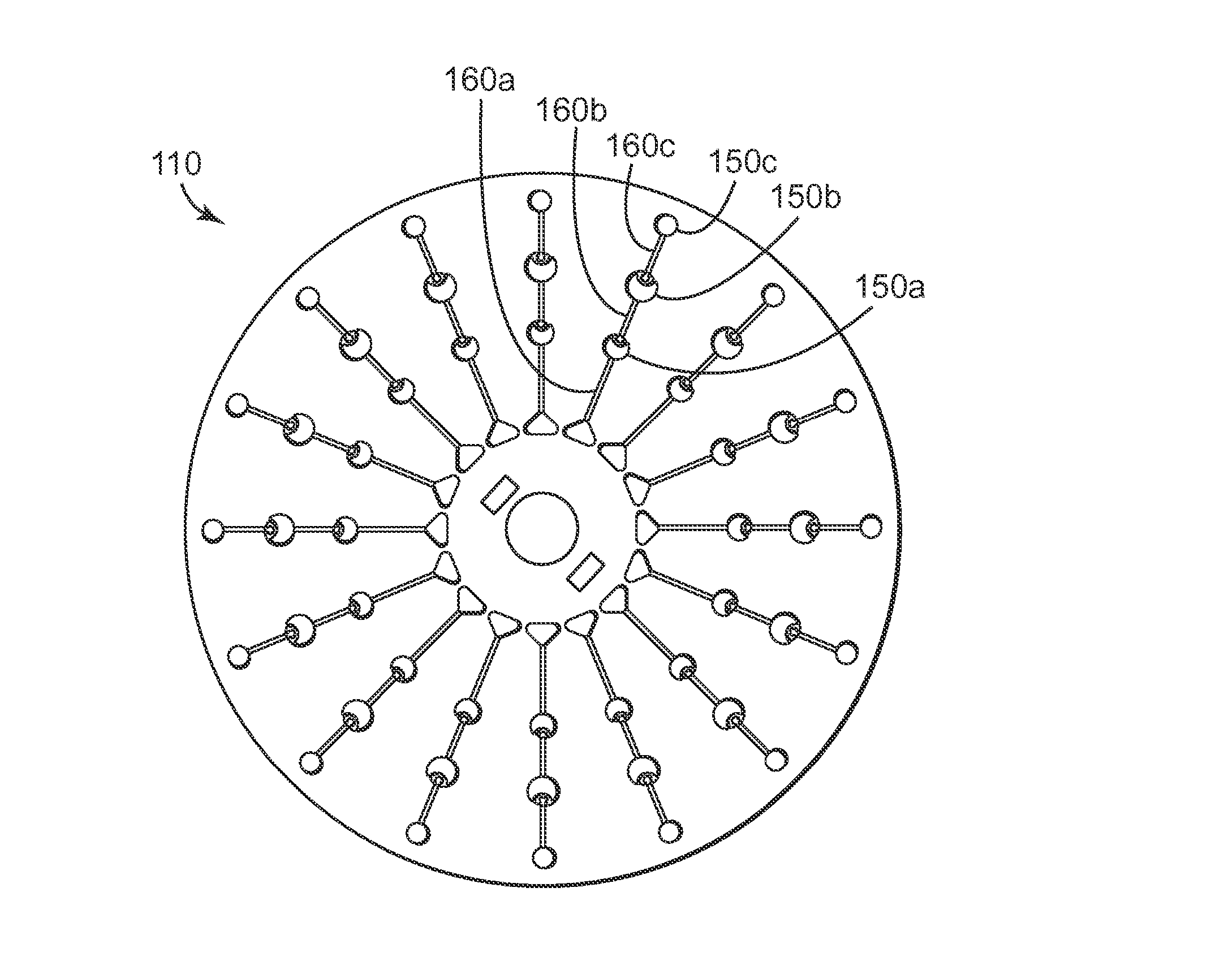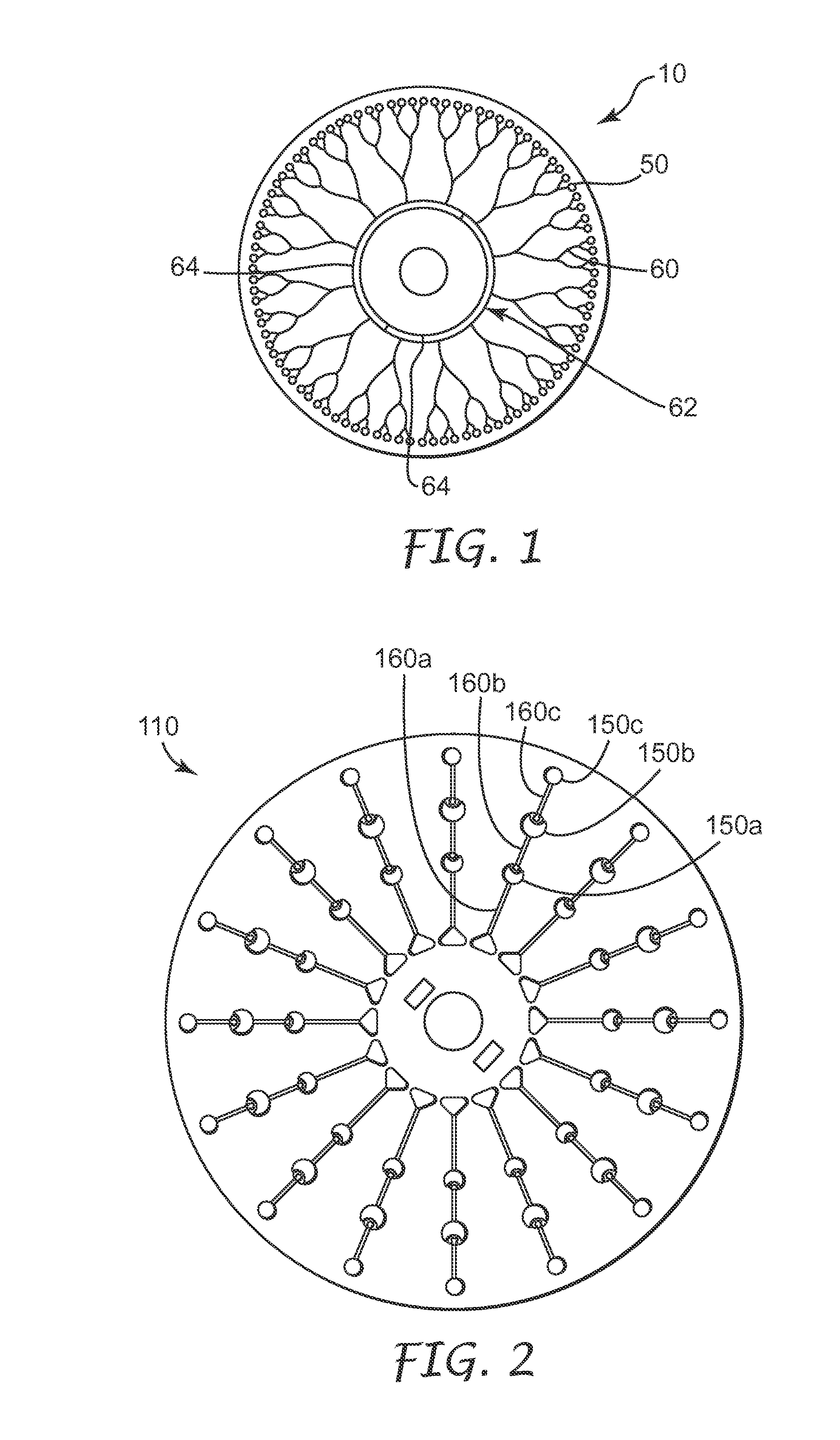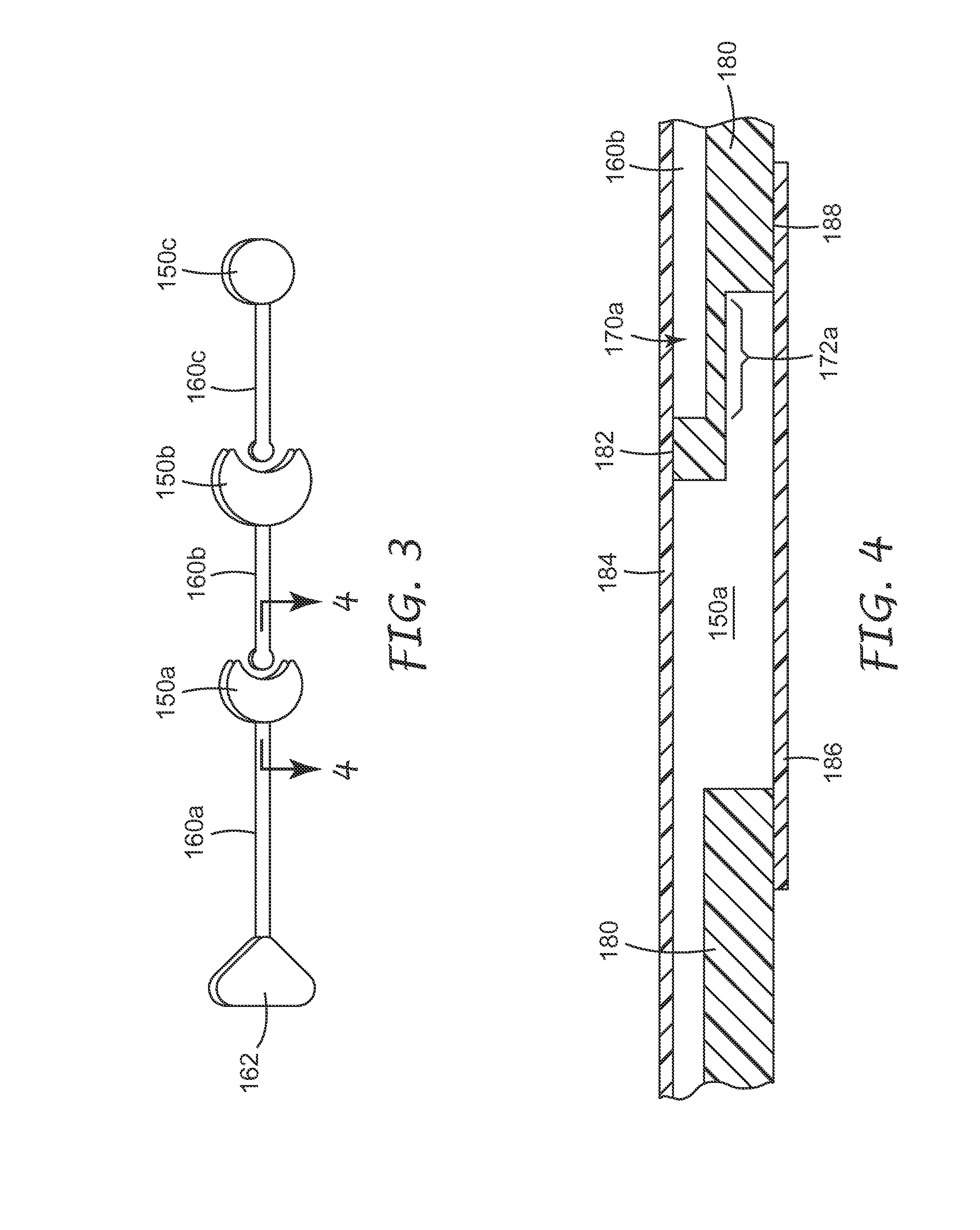Methods and devices for removal of organic molecules from biological mixtures using a hydrophilic solid support in a hydrophobic matrix
a technology of organic molecules and solid supports, which is applied in the direction of solvent extraction, separation processes, transportation and packaging, etc., can solve the problems of dye artifacts, inability to sufficiently reduce concentration, and the technology of pcr and nucleic acid sequencing reactions to be suitable for incorporation into microfluidic devices, etc., and achieves high throughput
- Summary
- Abstract
- Description
- Claims
- Application Information
AI Technical Summary
Benefits of technology
Problems solved by technology
Method used
Image
Examples
example 1
Preparation of Alumina / Adhesive Composite
[0092] A tape with a hydrophobic adhesive was immersed face down in a bed of ceramic particles. The alumina particles ranged in size from 3 micrometers (micron or μ or μm) to 6μ (ICN, Costa Mesa, Calif.). Pressure was applied to the top surface to achieve maximum efficiency of particle packing. This assembly was placed in an oven for 30 minutes at temperatures ranging from 40° C. to about 120° C. depending on the adhesive. The assembly was then allowed to cool to room temperature in a chemical hood. Excess particles were removed using air. The alumina / adhesive composite was then used for clean-up of unpurified sequencing reaction.
[0093] The adhesive tapes used were SCOTCH Brand 143 Mailing Tape, Stock Number 34-8501-9760-6, 3M, St. Paul, Minn. 55144; SCOTCH Brand 3561-C Packaging Tape, Stock Number 34-8506-0549-3, St. Paul, Minn. 55144; SCOTCH Brand 2020 Masking Tape, Stock Number CV-0001-8259-8, St. Paul, Minn. 55144; and TIMEMED Brand TSI...
example 2
Preparation of a Microfluidic Disk and Sequencing Reaction Clean-Up
[0095] A simplified microfluidic disk was used that consisted of eight duplicate processing lanes arranged radially in a laminated polypropylene disk (80 millimeter (mm) diameter, 0.030 inch thick (762 μm thick). Each processing lane consisted of a single combined input and clean-up chamber (circular well, 7.11 mm diameter, located on a 16.5 mm radius) that was connected to an output chamber (circular well, 4 mm diameter, located on a 29.0 mm radius) by a single channel (0.010 inch deep (254 μm deep), 0.015 inch wide (381 μm wide)).
[0096] A 4-mm disk (12 mm2 surface area) was punched from the alumina / adhesive composite and adhered onto the clean up chamber of the microfluidic disc. These 4-mm discs were positioned onto an adhesive cover film (9795R Advanced Sealing Tape, 3M Medical Specialties, St. Paul, Minn.) which was laminated onto a microfluidic disk with the 4-mm disk registered such that it covered the top a...
example 3
Screening of Alumina / Adhesive Composite for Clean-up of BIGDYE Terminators v 2.0 Using Capillary Electrophoresis and Reverse Phase HPLC
[0097] Capillary electrophoresis (CE) and reverse phase high pressure liquid chromatography (HPLC) were used as analytical tools to evaluate the performance of materials for clean-up of sequencing reactions, specifically removal of dye terminators and sequencing ladder recovery, prior to sequencing analysis by ABI PRISM 3100 Genetic Analyzer (Applied Biosystems, Inc.).
[0098] Capillary Electrophoresis (CE). Capillary electrophoresis analyses of purified sequencing reactions were done with Beckman P / ACE MDQ Capillary Electrophoresis instrument (Beckman Coulter, Fullerton, Calif.) with a fluorescence detector (488 nm excitation, 530 to 700 nm emission) using a 75 micrometer ID, 30 cm long (20 cm to the detector) fused silica capillary. Runs were performed at 500 volts per centimeter (V / cm) (15 KV total) using 50 nanomolar (mM) Tris-HCl / 1 mM EDTA (pH 8...
PUM
| Property | Measurement | Unit |
|---|---|---|
| particle size | aaaaa | aaaaa |
| particle size | aaaaa | aaaaa |
| surface area | aaaaa | aaaaa |
Abstract
Description
Claims
Application Information
 Login to View More
Login to View More - R&D
- Intellectual Property
- Life Sciences
- Materials
- Tech Scout
- Unparalleled Data Quality
- Higher Quality Content
- 60% Fewer Hallucinations
Browse by: Latest US Patents, China's latest patents, Technical Efficacy Thesaurus, Application Domain, Technology Topic, Popular Technical Reports.
© 2025 PatSnap. All rights reserved.Legal|Privacy policy|Modern Slavery Act Transparency Statement|Sitemap|About US| Contact US: help@patsnap.com



